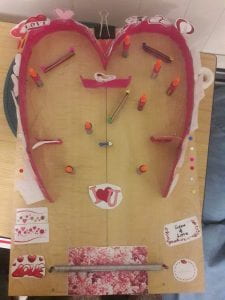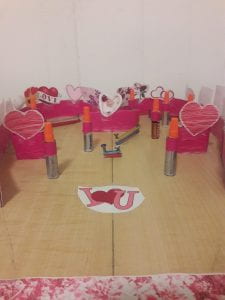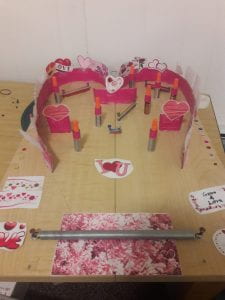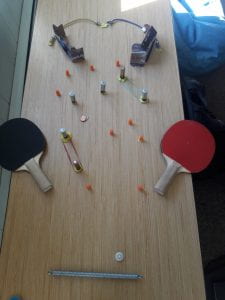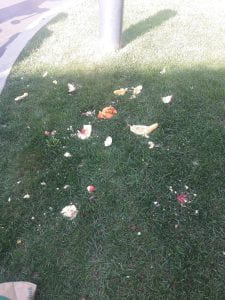Overview / Rules
Public Circuit is an Intervention piece with a focus on putting play in a disruptive location. Two teams race in a 3 legged race, with standard rules. This race takes place on the circular walking path of Centennial Quad during peak hours before common class times, such as before 11:45, 1:35, and 3:15. The two teams race to complete the circuit 5 times from the same starting point. They must stick to the path at all times, and must do their best not to bump into anyone on the path.
Artist Statement
This game looks to find meaning merely by transplanting one activity into a different location. The piece focuses on re-contextualization, and how that changes the dynamics of the activity. This is inspired by many happenings and artworks by artists like Kaprow and Ono. These pieces see artifacts or activities taken into different environments or contexts, even changing small things like the scale of an artifact. This piece is also very appropriative, as there are no new mechanics in the game. However, by putting this type of race where control and agility are limited in the context of a busy area, it adds obstacles normally not present. In this case, people become a barrier to your goals, and changes the dynamics and speed of the race. The race no longer relies on the strategies and physical abilities that are present in a normal three legged race, and it instead becomes about navigation, and how willing the racers are to be an inconvenience to passersby.
This games goals in terms of intervention are very similar to the freeze piece in Grand Central Station, where a focus isn’t on audience participation, but rather their perceptions of the event. Whereas that piece focused on mystery and audiences being confused, my piece focuses on more negative emotions. Actively being disruptive to people on their ways to class is an annoyance, and may result in people being upset or inconvenienced. However, this frustration that passersby may experience is directly juxtaposed with the playful competition present in the actual race. This dynamic is interesting, and acts as a break from the fairly direct and one-tracked peoples’ navigation to classes is.

